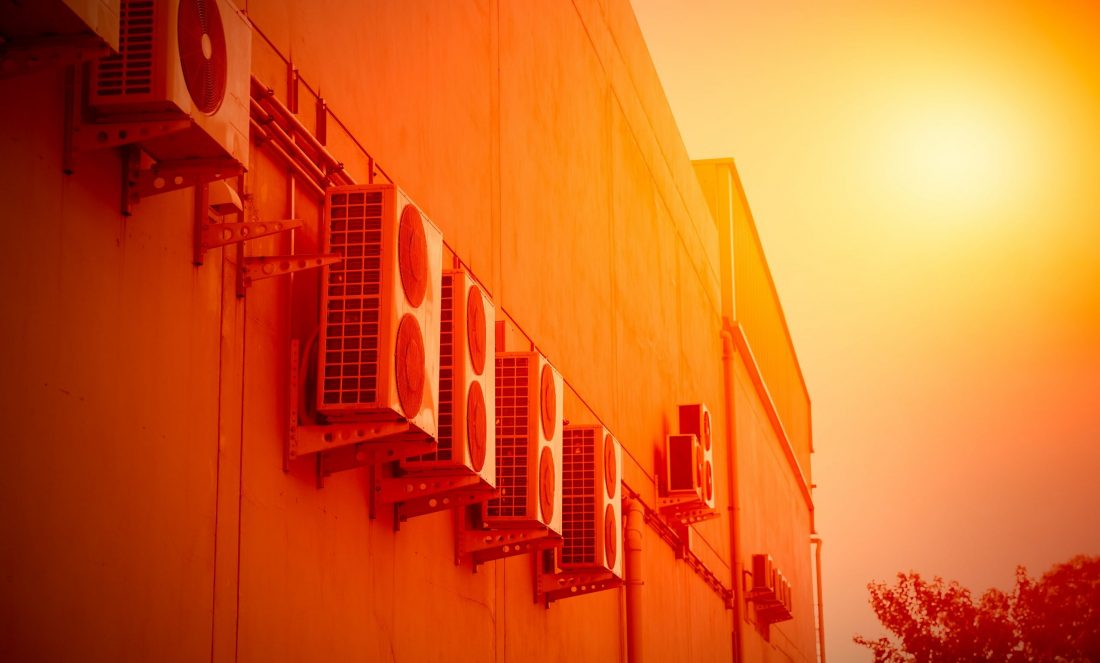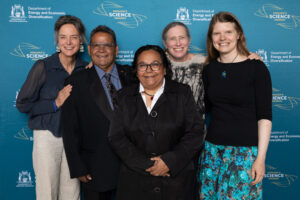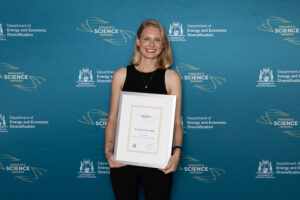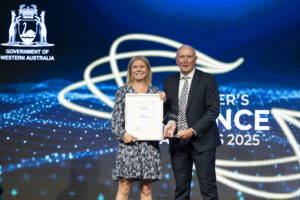As the temperature rises, so too does demand for air conditioning. And the more we reach for the thermostat, the more we contribute to climate change.
It’s a vicious cycle. And it’s getting so bad that Qatar is now using outdoor air conditioning to keep the country liveable. They’ve installed units in places like markets, walkways and even the brand new open-air Al Janoub stadium that was built for the 2022 World Cup.
The impact of air con
According to the International Energy Agency, there are about 1.6 billion heating, ventilation and air conditioning (HVAC) units. By 2030, this number will grow to 5.6 million.
This growing demand for air conditioning worries climate change and sustainability experts, including Fremantle-based Dr Sam Hall. Sam is an air conditioning activist, ‘building whisperer’ and founder of Spaces Alive, where she helps to make buildings more healthy, liveable and sustainable.
“To put the demand for HVACs into perspective, that means 10 new units every second for the next 30 years!” says Sam. “It’s a significant contributor to global warming.”
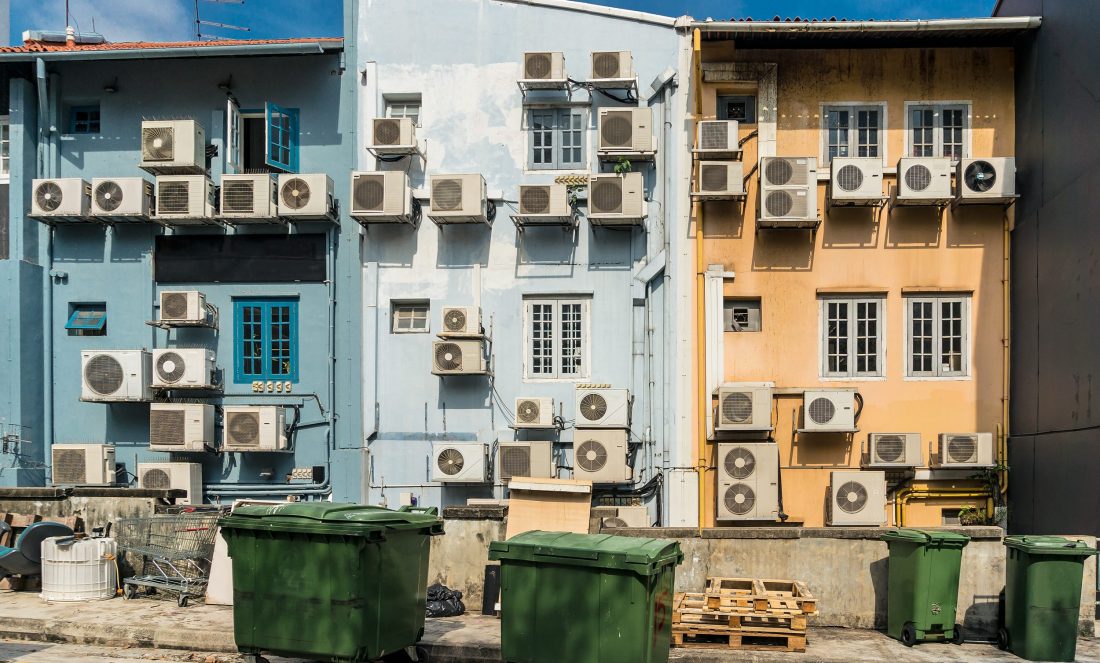
All these HVAC units increase greenhouse gas emissions through increased energy use, but they also leak hydrofluorocarbons (HFCs), which are thousands of times more potent that carbon dioxide.
Now you may be asking yourself, didn’t we ban those? Yes, says Sam, but there’s a catch. “We fixed the problem of CFCs (chlorofluorocarbons) impacting the ozone layer, but HFCs have taken longer and are currently being phased out,” she says.
So it’s older fridges and ACs that are leaking the stuff, especially if they haven’t been maintained properly.
Keeping cool with better design
There are other ways of keeping cool that are also better for the climate.
For example, says Sam, we could be building passive design houses, which “use insulation, correct orientation, thermal mass and natural ventilation so that you don’t even need an air conditioner”.
If you’re building new, going with a passive design will save you between 50 to 70% of your electricity bill in the summer, says Sam, as well as reducing your carbon footprint.
Better neighbourhood design is also another way of keeping cool.
“Because of the way many suburban areas are subdivided and developed, trees have been removed,” says Sam. “Trees are an amazing natural cooling element. As well as bringing shade to footpaths or a yard, they reduce the heat load on a building.”
The natural cooling from trees is due to shade, urban heat island mitigation and transpiration, says Sam. Now if you don’t remember the term from your high school science class, transpiration is where heat hits a tree’s leaves and water in the plant is vaporised. This vapour then cools the air below.

“You just have to walk across some concrete without shade to feel the effect. It’s a downward spiral when you have no shade. An AC system’s in the sun working really hard to cool your hot house.”
A solution to this, says Sam, is to plant more trees to increase canopy cover. In the UK, for example, the government is supporting the planting of 50,000 trees for this purpose, with a similar initiative happening in Bayswater, Western Australia.
Keeping cool without air conditioning
Without building a new house or planting more trees, what can you do to keep cool in a more sustainable way?
“When you come home from work and it’s stifling hot, try to use fans and windows to cool the house before you put the AC on,” says Sam.
If you are going to use the air conditioner, you’ll also want to shut all the windows and doors to seal the house and make sure to only cool the rooms you’re using rather than the whole house.
Even just turning the temperature up a few degrees can make a big difference, says Sam. Just 1°C cooler can be an extra 10% energy use.
The sweet spot for maximising the efficiency of your air conditioning, says Sam, depends on a few factors.
“For the home, it’s really what you can cope with and the needs of occupants. For example, babies and elderly have higher comfort needs,” she says. “For the office, it’s usually set between 20 and 24°C.”
Air conditioning activism
In fact, the workplace is another way we can reduce our AC use. Most women will be familiar with feeling cold at work in the summer. AC temperatures are set for male preferences, but that’s another story.
“If you are sitting in your office with a jumper on whilst outside it is over 30°C, talk to the facility manager. Don’t just accept that!” says Sam. “Just a degree increase can make a significant energy impact.”
So, here’s a radical thought:
What if we just changed what we wear to work?

“I hope the future sees us at work in shorts and t-shirts,” Sam says.
Doesn’t sound too bad, does it?



